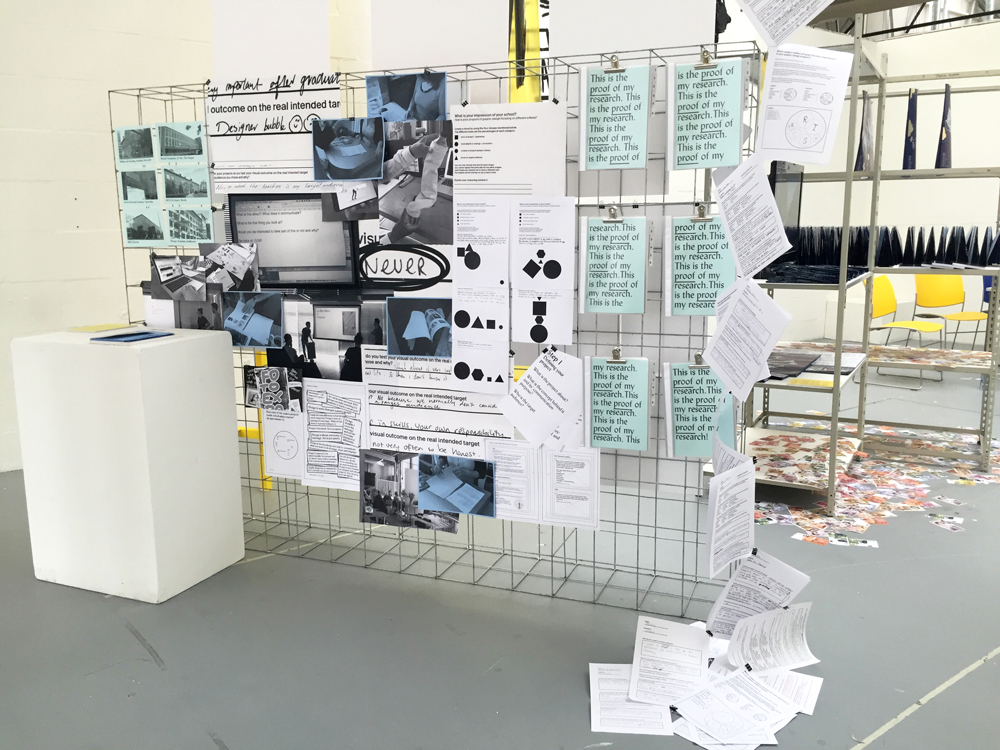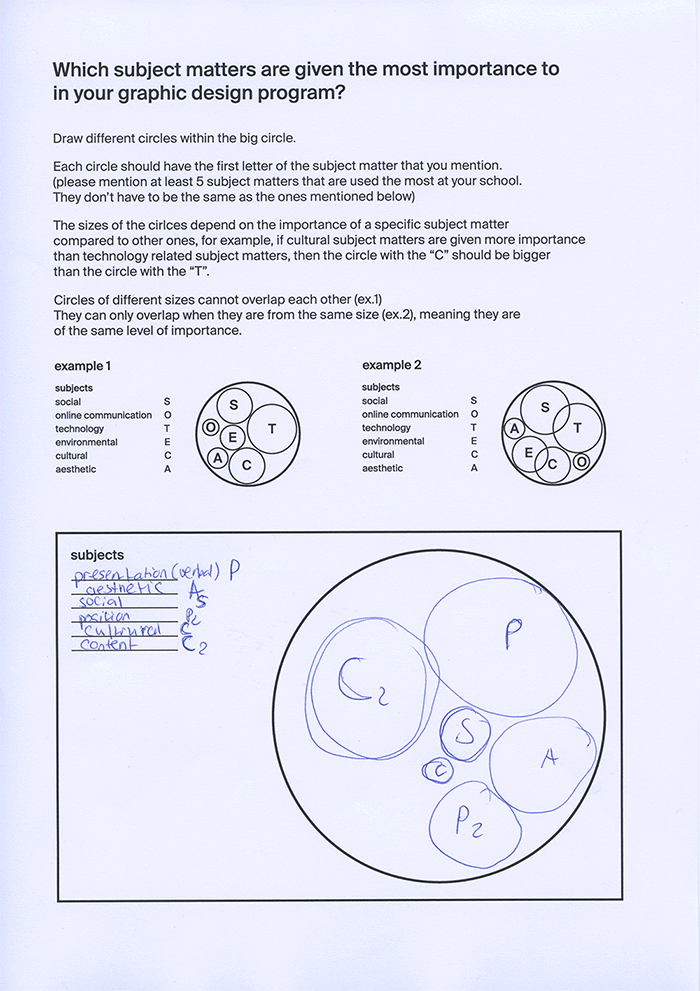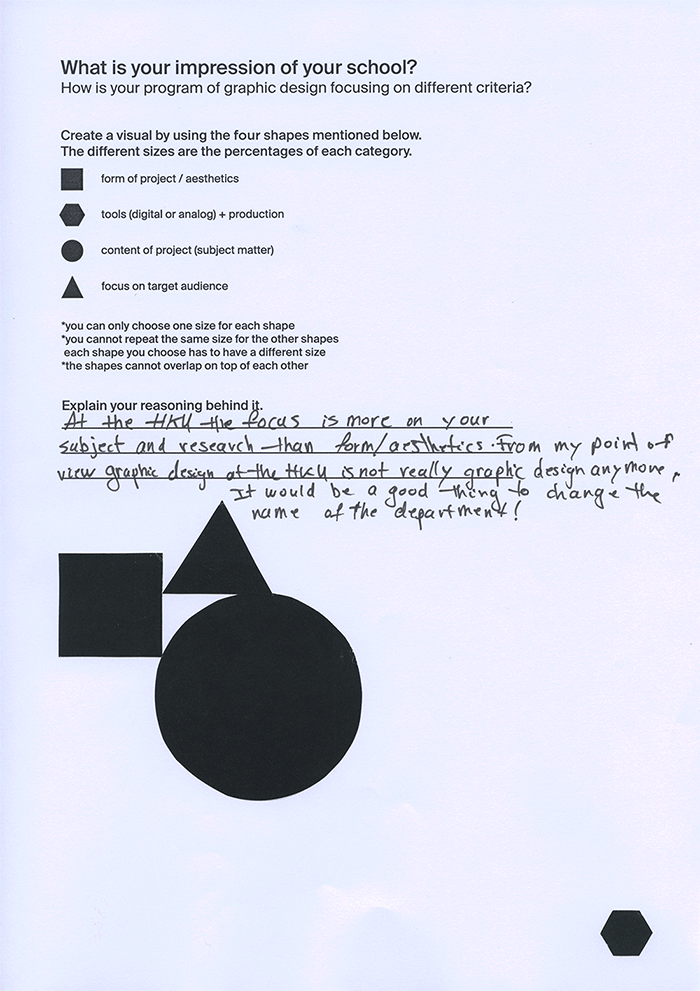

Examining graphic design education from within — Master thesis project
‘The ‘real world’ is not just private, it is public too; and as such, it cannot be a place governed only be self-interest. Rather, the public sphere us where ‘disinterest’ must be exercised with critical responsibility for the goof of all’ Al Robertson, 2005.
Besides creating aesthetically appealing outcomes and interesting subject-related projects, graphic design has one crucial role - before anything else - and that is communication. In order to achieve a successfully communicated project, three key-elements should be taken into consideration: context, audience and communicative purpose.
Starting with context, the spine at the core of any project, making it essential for graphic design students to define it clearly in their work. Reasons behind the problem of contextual disconnection, are that students generally don’t collaborate enough with experts concerning the specific subject matters they are working on, resulting in a poor communicative outcome. Within context itself, comes a series of cultural attributes; most design academies in the Netherlands teach students the history of graphic design from a European perspective. Avoiding historical alternatives for design knowledge, leads to alienation and irrelevance in projects related to cultural contexts of specific communities.
The term ‘target audience’ is quite visible and recurrent in most assignment briefs, however, mentioning it in a project doesn’t mean that it is really being taken into consideration, where students tend to dismiss their surroundings and the complexity in which their work will be presented.The accumulation of such obstacles sets major barriers for most students, and consequently puts them at the heart of the designing for designers’ ‘bubble’; in other words, having teachers and fellow students as audience diverts most projects away from their actual audiences, situated outside the creative circle.
The latter results in a missing link between the classroom and the real world, outside the white walls of the academy where student work is not tested ‘in’ the actual intended context and ‘with’ real people. Engaging exclusively within the classroom with issues that exist outside the classroom leads to misinterpretation and leans towards the absurd.
‘Reality’ should be forced in order to break out of the design academy borders: hence how can projects be embedded in reality? How to incorporate the three key-variables in the curricula? How can teachers emphasize further on their importance in the work process? At what stage of the design process should the student be questioned? How can they evaluate that students are absorbing and incorporating the elements of context, audience and communication in their education? And what tools can be used to achieve this progressive turn in design education?
The methodology I’ve adopted in this research consists of several steps. The first step was the review and critique of the extant literature, utilizing many secondary sources, such as articles, books, blogs, symposiums and online presentations. The next step was to analyze the curricula of bachelor graphic design programs in different academies in the Netherlands (mentioned further below), and reporting back on my observations of the fourth year bachelor graduation projects, which I assisted this year, and also of the archive of previous graduation projects that have been produced in the last five years. By doing so, my aim was to examine what type of topics these projects are tackling and if they adopted the three key points that I mentioned above, which are: subject, context and audience. Another source of information for my research came as a result of conducting interviews and surveys with many key stakeholders and educators involved in Academia in the Netherlands. The interviews and surveys helped me identify different perspectives and opinions concerning my research topic. Two types of interviews were conducted, one that was addressed to professional designers with an academic background encompassing contemporary graphic design education with an emphasis on the three elements of focus. And a second one which was addressed specifically to teachers and students in graphic design programs in the Netherlands.
The interviews and surveys were conducted in six key design schools in the Netherlands, and these included the Royal Academy of Arts (KABK) in the Hague, the Willem de Kooning Academy in Rotterdam, the Gerritt Rietveld Academy in Amsterdam, the HKU in Utrecht, the AKV St. Joost in Breda and in Den Bosch, and finally the Design Academy in Eindhoven. Selecting a wide range of academies exposed me to a rich source of information, and provided me with varying perspectives in graphic design education.
The experience allowed me to compare, analyze and observe the differences in their vision, curricula, teaching methods, course objectives, and their core values in design education. And finally, throughout the process, I have designed and organized several workshops based on the importance of “context and audience” and how projects are embedded in reality. The workshops took place in three academies, one in HKU with 3rd year students, one in KABK with 4th year students and one in Willem de Kooning Academy with 2nd year students.
If you are interested in reading the full written thesis , click here







































